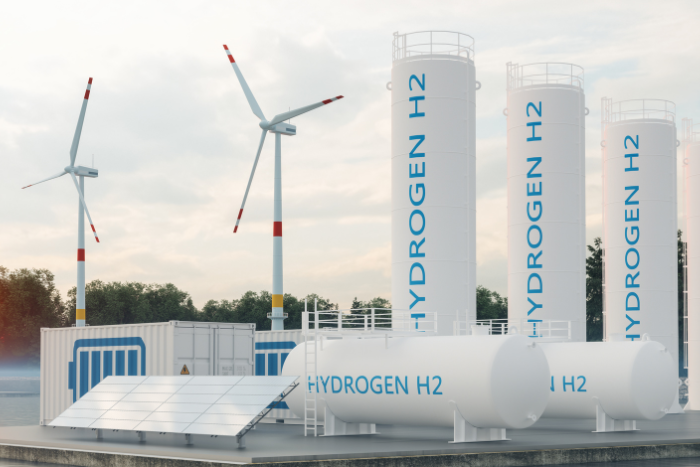Oil producing company Bharat Petroleum Corp. Ltd. (BPCL) developed an alkaline electrolyzer in collaboration with India’s Bhabha Atomic Research Centre (BARC), which was unveiled as India’s first domestically produced alkaline electrolyzer this week at the India Energy Week (IEW) 2024 in Goa.
In alkaline water electrolysis, hydrogen is produced from alkaline water via electrolysis. In line with India’s target to build 5 million metric tonnes of annual green hydrogen production capacity by 2030, BPCL plans to build a 5 MW green hydrogen plant at the Bina Refinery, the outlet reported adding that it has plans to set up a 500 kW integrated hydrogen refuelling station at the Cochin International Airport. BPCL aims to highlight its progress in green hydrogen production
New payment security mechanism in 2024 budget to boost e-buses in states
According to India Ratings and Research, the new payment security mechanism (PSM) in the 2024 interim budget will significantly enhance competition in the electric bus concession market, leading to a reduction in the per kilometre fee, which is a crucial bid parameter, reported the ET.
The outlet added that this move aims to improve the risk profile of project developers, enabling state transport undertakings to modernise and expand their services at competitive prices, despite their aggregate loss-making status. The proposed PSMs are expected to address counterparty risks effectively, thereby improving the bankability of e-bus concession contracts. This improvement is anticipated to attract new developers and investors to the e-bus market, which could lead to further reductions in the prices contracted under gross cost contracts, the report said.
Centre’s pilot project uses green hydrogen to run trucks and buses between cities
The government launched pilot projects till 2025-26 with an outlay of ₹4.96 billion to use green hydrogen in the long-haul transportation sector under the National Green Hydrogen Mission, Mercom reported. It added that the plan is to back the deployment of green hydrogen through fuel cell electric vehicles (FCEVs) and hydrogen internal combustion engine (ICE) based trucks and buses in a phased manner. It will also explore blending green hydrogen-based ethanol, methanol, and other synthetic fuels to run automobiles.
The programme eventually envisions setting up “Hydrogen Highways” for heavy-duty and long-haul vehicles with distribution networks and refuelling stations.
The report said financial assistance initially will be provided to FCEVs and hydrogen ICE vehicles to close the funding gap, considering their higher cost. Expenses to produce green hydrogen or land will not be funded. Central financial assistance will be disbursed in three stages: Issue of letter of award (20%), milestone-based disbursement (70%), and completion (10%).
LG launches new residential storage solution
South Korean group LG unveiled a new PV storage system for residential users. The enblock E system is available in two versions, with usable energy capacities of 12.4 kWh and 15.5 kW. The system features lithium iron phosphate battery (LFP) cells. It is also compatible with inverters from major producers such as Fronius, Kostal, GoodWe and SMA, PV Magazine reported.
According to the company, owners of a PV system can integrate enblock E on the DC side with a new solar system or retrofit an existing solar system on the AC side. “If the originally installed storage capacity is not sufficient, enblock E allows an additional storage module to be retrofitted up to two years after commissioning,” the LG statement said.
About The Author
You may also like
First EV battery plant launched in Indonesia, the country with largest nickel reserve
India can climb the global battery supply chain ladder. Here’s how.
New safety standards for EVs in India released
New method to produce hydrogen uses solar energy, agricultural waste
Tata Power-DDL to demonstrate vehicle-to-grid technology in North Delhi


